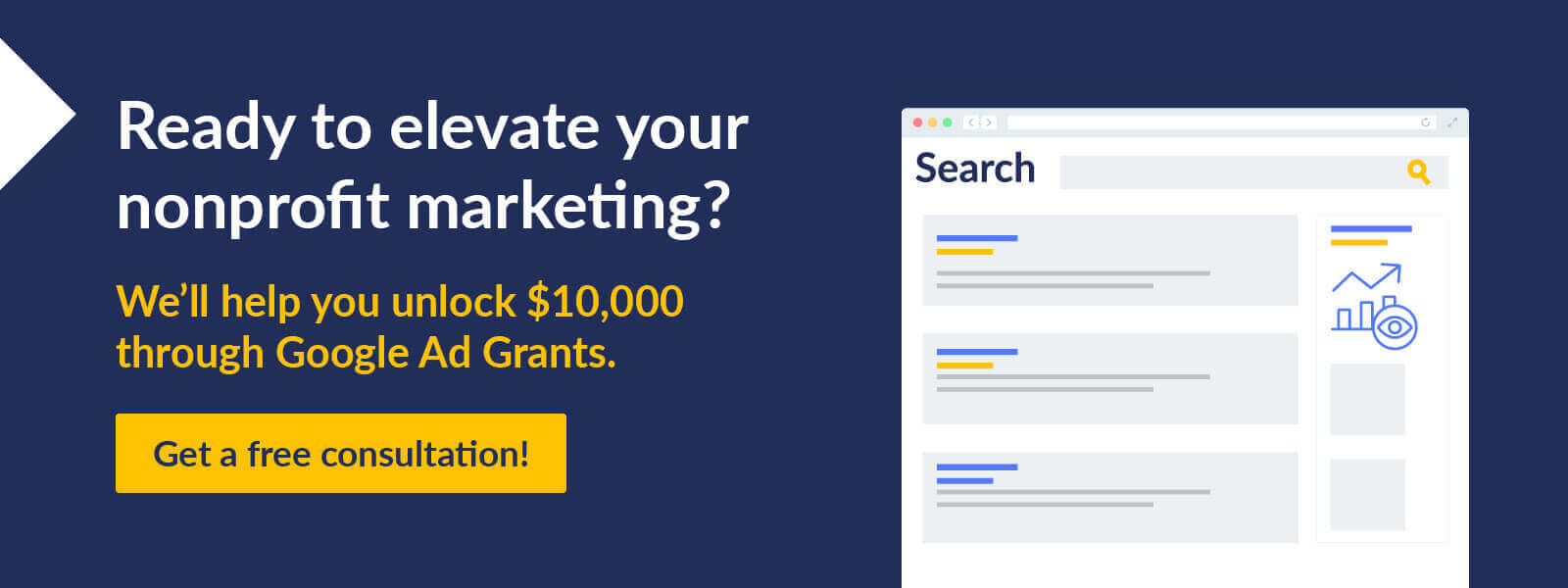Nonprofit Content Marketing: Create Content Supporters Love
Nonprofits operate in a unique intersection of passion and practicality, striving not only to champion their causes but also to engage a community of supporters who are just as dedicated. At the core of this engagement lies an integral yet underappreciated tool: nonprofit content marketing.
While many nonprofits recognize the necessity of marketing for donor acquisition and retention, the content of these materials often gets brushed over. This oversight can mean missed opportunities in an environment where every interaction counts.
To help, we’ll explore everything you need to know about creating a successful nonprofit content marketing strategy that incites passion for your mission, including:
Whether your goal is to inspire a first-time visitor to become a lifelong donor or to re-engage lapsed supporters, the right content can make all the difference. Let’s dive in!
Content Marketing FAQ
Before you craft your strategy, let’s explore the fundamentals and importance of this type of marketing.
What Is Nonprofit Content Marketing?
Nonprofit content marketing is a type of marketing that involves creating and distributing written and multimedia collateral that’s valuable and relevant to an organization’s cause. This type of marketing focuses on telling the organization’s story, showcasing impact, and building trust among potential and current donors, volunteers, and advocates.
Content can take many formats, including long and short-form ones. Common types of nonprofit content marketing include blog posts, emails, social media posts, videos, case studies, and eBooks. The best content aims to help the reader and educate them on the cause, rather than pushing them to take action.
What Are The Benefits of A Nonprofit Content Marketing Strategy?
Generally, nonprofit content marketing helps deepen connections by fostering trust and engagement through storytelling and information sharing. By understanding best practices for content creation, your organization can enhance its narrative, connect meaningfully with its audience, and drive its mission forward.
Although most nonprofits engage in some form of content marketing, having a specific strategy can greatly boost its effectiveness. Here are some key benefits of implementing a well-defined nonprofit content marketing strategy:
- Consistent Messaging: A structured content marketing strategy ensures consistent messaging across various channels. This consistency helps build a recognizable brand voice and identity.
- Goal-Focused: A strategy ensures that every piece of content has a purpose aligned with your organization’s broader goals. Whether it’s raising awareness, driving donations, or recruiting volunteers, a strategic approach ensures all marketing efforts contribute to achieving specific objectives.
- Easy Results Tracking: With a clear strategy, it’s easier to set benchmarks and measure the effectiveness of your nonprofit’s content marketing efforts. Marketing data like engagement rates, conversion rates, and overall reach can be invaluable for assessing what works.
Essentially, implementing a dedicated content marketing strategy will allow your nonprofit to maximize its outreach and drive passion for its mission.
What Can Nonprofit Content Marketing Strategy Accomplish?
A well-crafted approach to nonprofit content marketing can achieve several objectives that are vital for the growth and sustainability of your organization, such as:
- Supporter Acquisition: Attract new supporters by creating content that vividly showcases your nonprofit’s mission and its tangible impact through beneficiary stories and impact metrics.
- Supporter Engagement and Retention: Keep current supporters actively informed through regular updates and compelling stories that highlight ongoing efforts and the impact of support.
- Sales Lead Generation: Strengthen revenue streams through content that promotes your nonprofit’s revenue-generating services, programs, or products, reinforcing your financial base.
By strategically employing content marketing, your nonprofit can ensure a broader reach and deeper connections, turning passive observers into active supporters. This approach not only drives your mission forward but also builds a sustainable foundation for future impact.
Types of Nonprofit Content Marketing
There are several types of content your nonprofit can create. While this gives your nonprofit plenty of options, it can be overwhelming trying to find the perfect mix that inspires your audience.
The best combination depends on your nonprofit’s mission, audience, and goals. With that in mind, here are the core types to consider:

Written Content
Written content is a cornerstone of an effective nonprofit content marketing strategy. It offers a variety of formats to engage different segments of your audience. Each type of written content serves a unique purpose and can be tailored to meet specific organizational goals:
- Blog Articles: These provide a platform for deeper storytelling, allowing your nonprofit to elaborate on its mission, tell stories, and discuss relevant issues. When optimized for search engines, blogs can drive traffic to your website and establish your organization as a thought leader in its field.
- Email Marketing: Personalized email campaigns can nurture relationships with supporters by delivering targeted messages directly to their inboxes. Emails are excellent for updates, donor appeals, and sharing the direct impact of contributions.
- Search Engine Ads: Paid search engine ads can boost visibility and direct traffic to key content or your donation page. Since Google owns over 90% of the search engine market, Google Ads are particularly impactful for capturing the attention of potential supporters who are searching for related topics or services. You’ll need to write compelling ads that emphasize your mission, target relevant keywords, and inspire action, like this example from Erika’s Lighthouse:
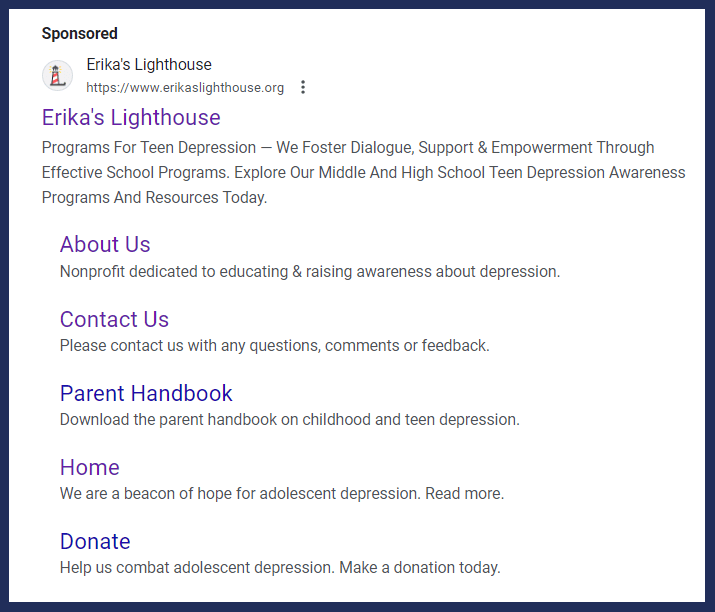
- Social Media Posts: Quick, engaging posts on social media platforms can increase awareness, encourage shares, and foster community among followers. These posts are ideal for real-time updates, event promotions, and viral fundraising campaigns. Consider which platforms your supporters are active on, whether that’s Instagram, Facebook, TikTok, LinkedIn, or X (formerly Twitter).
- Flyers: Traditional but still effective, fundraising flyers can be used to promote events, recruit volunteers, and raise awareness locally. They are especially useful when posted on community bulletin boards and handed out by local businesses.
- eCards: Charity eCards can be sent to thank donors, share success stories, and celebrate special occasions. It’s a fairly cost-effective method, so design birthday or holiday eCards to let supporters know you’re thinking of them or thank-you cards to show appreciation. You can even create cause awareness eCards for supporters to send, like this example from Project Sleep:
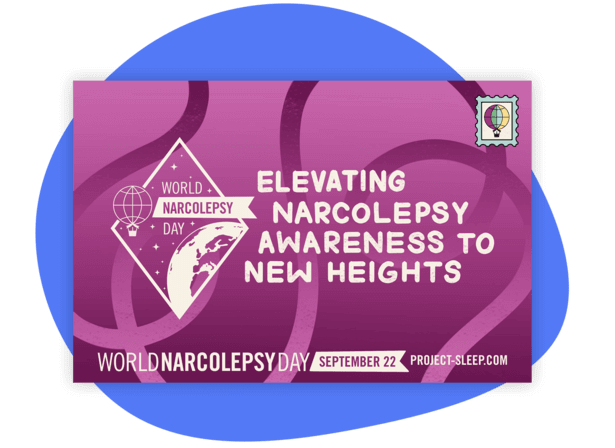
Each type of written content offers unique benefits and can be strategically integrated into your overall marketing plan to achieve your nonprofit’s goals. Do you want to enhance donor appreciation? Try thank-you eCards. Do you want to drive traffic to your latest fundraising campaign? Create Google Ads that highlight your campaign’s purpose and feature your fundraising page.
By diversifying your channels and tailoring messages to different audience segments, you can enhance outreach, deepen connections, and drive more meaningful actions.
Video
The rise of video content in digital marketing is undeniable, with marketing research showing that viewers retain 95% of a message when they watch it in a video compared to 10% when reading it in text. This visual and dynamic medium can significantly enhance engagement and message recall, making it a powerful tool for nonprofits.
Plus, video is only growing more popular. Wistia’s video platform reported a 15% increase in video plays and a 44% jump in watch time in 2023.
To create impactful video content, consider the following strategies:
- Equipment: High-quality video doesn’t always require professional-grade equipment. Today’s smartphones offer excellent video capabilities, and when paired with a good microphone and stabilizer, they can produce surprisingly professional results. However, for certain projects, investing in or renting higher-quality equipment can improve the look and sound of your videos.
- Scriptwriting: A well-crafted script is crucial. It should clearly outline the message, ensure a logical flow of ideas, and include a compelling call to action. The script should resonate with your audience, emphasizing the impact of their support and the real stories behind your cause.
- Editing: Good editing can transform basic footage into a compelling story. It involves not just cutting and arranging clips, but also integrating elements such as music, text overlays, and effects to enhance the emotional and informational value of the video.
- Accessibility: Include closed captions, create transcripts, and ensure that videos are compatible with assistive technologies. This not only broadens your audience but also complies with accessibility standards, enhancing the inclusivity of your content. On TikTok, adding captions boosts viewer affinity by 95%, recall by 58%, likability by 31%, and uniqueness by 25%, according to that same Wistia study cited earlier.
Tap into this form of nonprofit content marketing with YouTube for Nonprofits. This program offers special features like linkable donation buttons directly in videos, the ability to broadcast live events, and access to powerful analytics tools. These features help maximize the reach and impact of your videos, making it easier for your nonprofit to connect with a global audience, spread its message, and drive donations.
Images
Visual storytelling through images can significantly enhance the way your nonprofit communicates its mission. Decorative images not only capture attention but also convey emotions and narratives more effectively than text alone.
Here are a few types of images that can be particularly impactful:
- Photographs: Real, compelling photographs of your nonprofit’s activities and the individuals whose lives you’ve impacted can evoke strong emotional responses. These images can make your mission feel more tangible to your audience.
- Infographics: These combine graphics and data to explain complex information clearly and quickly. Infographics are particularly useful for illustrating your nonprofit’s achievements, explaining processes, or showing how donations are used.
- Illustrations: Sometimes creative or abstract concepts are best conveyed through illustrations. These can be used to visualize stories and ideas that are difficult to capture with photographs, offering a unique and engaging way to communicate your mission.
Using these types of images strategically can enhance your nonprofit’s storytelling and deepen understanding and empathy toward your cause. If you don’t have a graphic designer in-house, consider outsourcing the work. Kwala’s nonprofit graphic design guide suggests choosing a company that offers a wide range of creatives, provides web and print designs, and has mission-driven expertise. That way, you can focus your energy on your work rather than attempting to master different design tools.
Events
Whether virtual or in-person, events serve as dynamic content that engages audiences, provides valuable experiences, and communicates key messages about your nonprofit’s mission. Events offer unique storytelling opportunities that can be captured and leveraged in future marketing efforts to showcase success stories backed by direct quotes and video content.
Here are a few types of events that serve as content marketing opportunities:
- Live Events: These include galas, fundraisers, and, community gatherings that provide direct engagement with attendees. Live events not only raise awareness and funds but they also create vivid content through speeches and participant interactions that can be shared across media platforms.
- Webinars: These virtual events offer educational content that can attract a broader audience. Webinars are excellent for sharing thought leadership, expanding reach, and providing valuable content that can be repurposed in blogs, podcasts, or e-learning materials.
- Appreciation Events: These events are explicitly designed to thank donors, volunteers and community members. Although they don’t directly solicit donations, they play a crucial role in stewardship by deepening loyalty and affinity towards your nonprofit. This indirectly promotes your organization by fostering a strong, supportive community.
Incorporating these nonprofit events into your nonprofit’s content marketing strategy can provide a rich source of content for ongoing outreach efforts.
7 Content Marketing Strategies
With these types of content in mind, you can develop a strategy that promotes your mission and inspires support. Let’s walk through seven easy steps to create your plan.
1. Have Clear Goals.
It’s essential to align the objectives of your nonprofit’s content marketing with your broader strategic goals. This alignment ensures that every piece of content—whether a blog post, video, or social media update—contributes directly to overarching fundraising targets, volunteer recruitment, or awareness campaigns.
Assess your strategic plan to determine how these objectives translate into specific marketing goals. For example, if your goal is to reach a certain fundraising milestone, your nonprofit’s content marketing strategy might focus on:
- Increasing donor value: Create content that educates current donors on the impact of increasing their contributions.
- Acquiring new donors: Develop targeted campaigns that appeal to potential donors by highlighting the uniqueness and urgency of the cause.
- Engaging recurring donors: Produce updates and stories that keep loyal supporters informed and emotionally connected to the organization.
In a broader marketing context, these specific goals can translate into measurable marketing objectives, such as generating sales leads from new donor segments, increasing traffic to your donation page, or boosting social media engagement.
2. Establish Your Target Audience.
Creating content with a specific audience in mind is essential for effective nonprofit content marketing. Here’s how to determine the materials that will appeal to your target audience:
- Assess your internal marketing data, particularly past engagement metrics, to identify what’s previously resonated with your audience.
- Analyze marketing trends to understand broader behaviors within the nonprofit sector or your specific cause area.
- Survey your donor base to gather direct feedback about your audience’s interests, needs, and preferences.
This multi-angle approach ensures your content strategy is data-informed and tailored to your audience’s evolving expectations.
3. Personalize Content.
In direct marketing, personalizing content ensures your material resonates on an individual level. Start by segmenting your audience into groups like donors, volunteers, and customers. Then, refine those segments even further, such as by dividing donors into recurring, lapsed, and prospective major donors.

To enhance your segments, consider using data appends, which improve your existing databases with additional details like preferences and behaviors, allowing for even more precise and impactful content customization.
Beyond only considering common characteristics, you’ll want to tailor the messaging to address the specific interests and needs of each segment. This is known as personalization, and it’s a powerful way to produce content that resonates with your audience. For instance, someone who would potentially purchase your nonprofit’s professional development courses might need to read testimonials and impact metrics to understand the value of investing in your product.
4. Use Storytelling Strategies.
Emotions can influence supporters’ behaviors. One donor behavior study found that positive emotions tend to elicit higher total donation amounts, while negative emotions can lead to higher individual donation amounts.
Here’s how to effectively use storytelling to tap into these emotional drivers:
- Focus on an individual protagonist. Center your story around a single character to create a more relatable and emotionally engaging narrative.
- Add specific details. Incorporate vivid details to paint a clear picture without overwhelming or distracting the audience.
- End with a call to action. Conclude your story with a compelling call to action. This tells your audience how they can help, whether that’s by donating, volunteering, signing a petition, or taking another action.
- Adhere to storytelling ethics. Always obtain permission from individuals whose stories you share and commit to truthfulness in your narratives.
These storytelling tactics will enhance emotional connections and align with the observed impacts of different emotional appeals on donation behaviors.
5. Demonstrate Your Thought Leadership.
The best content is original and insightful. When posted on your website, this not only appeals to search engines but it also builds trust with supporters.
Here’s how to accomplish just that:
- Share internal research. Whenever possible, share studies or data your team has compiled, ensuring privacy and confidentiality are not compromised.
- Link to trusted research. Enhance credibility by linking to reputable sources.
- Use original photos. Incorporate unique photos taken by your team to add authenticity to your content.
Once you produce valuable content, drive immediate visibility to those key pages by promoting it with Google Ads. If eligible for the Google Ad Grant, your nonprofit can promote these pages for free. You’ll receive up to $10,000 each month to promote valuable pages that advance your mission.
6. Follow SEO Best Practices.
Search engine optimization (SEO) is vital for increasing the visibility of your nonprofit’s website content. A comprehensive SEO strategy is particularly useful for nonprofits that sell programs, products, and services, because people searching for terms related to your nonprofit already know exactly what they’re looking for. SEO puts your nonprofit front and center.
When someone searches for a word, phrase, or question on Google, they’re directed to a search engine results page (SERP) that’s comprised of relevant ads and organic results. If your website’s content is optimized for SEO, it’ll ideally appear under the Google Ads on the SERP.
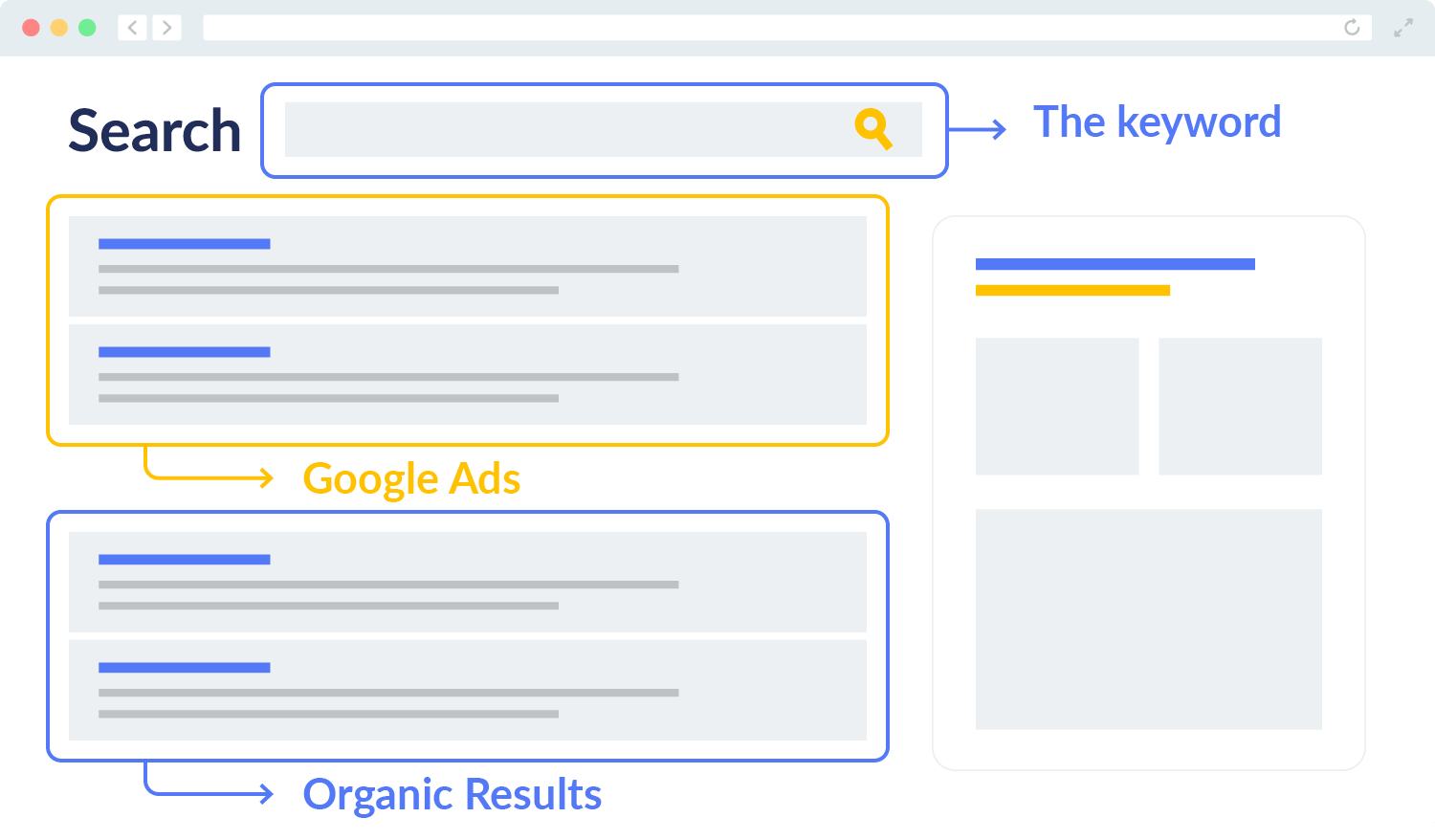
A strong SEO strategy consists of several elements, including:
- Keyword Research: Identify and naturally use keywords throughout your content, so potential supporters can find services like yours.
- Original Content: Create unique, high-quality content that addresses your audience’s needs and interests related to your cause.
- Backlinks From Reputable Sources: Boost your site’s authority by securing backlinks from reputable sites within your industry, such as by guest blogging.
- Technical Best Practices: Optimize your website for speed, mobile usage, and accessibility to enhance the user experience and ensure search engines can crawl your content.
SEO is a long-term strategy, meaning it will take time to see results compared to paid ads. Google constantly recrawls content, so you have endless opportunities to study results and improve your approach.
Getting Started With SEO
To elevate your SEO strategy, we recommend partnering with Nexus Marketing. Their team of skilled SEO experts and content creators has over a decade of experience in the mission-driven sector.
Not to mention, Nexus boasts an incredible network of 500+ partners in the mission-driven space, meaning they can scale your authority-building strategy rapidly through valuable backlink and guest posting opportunities.
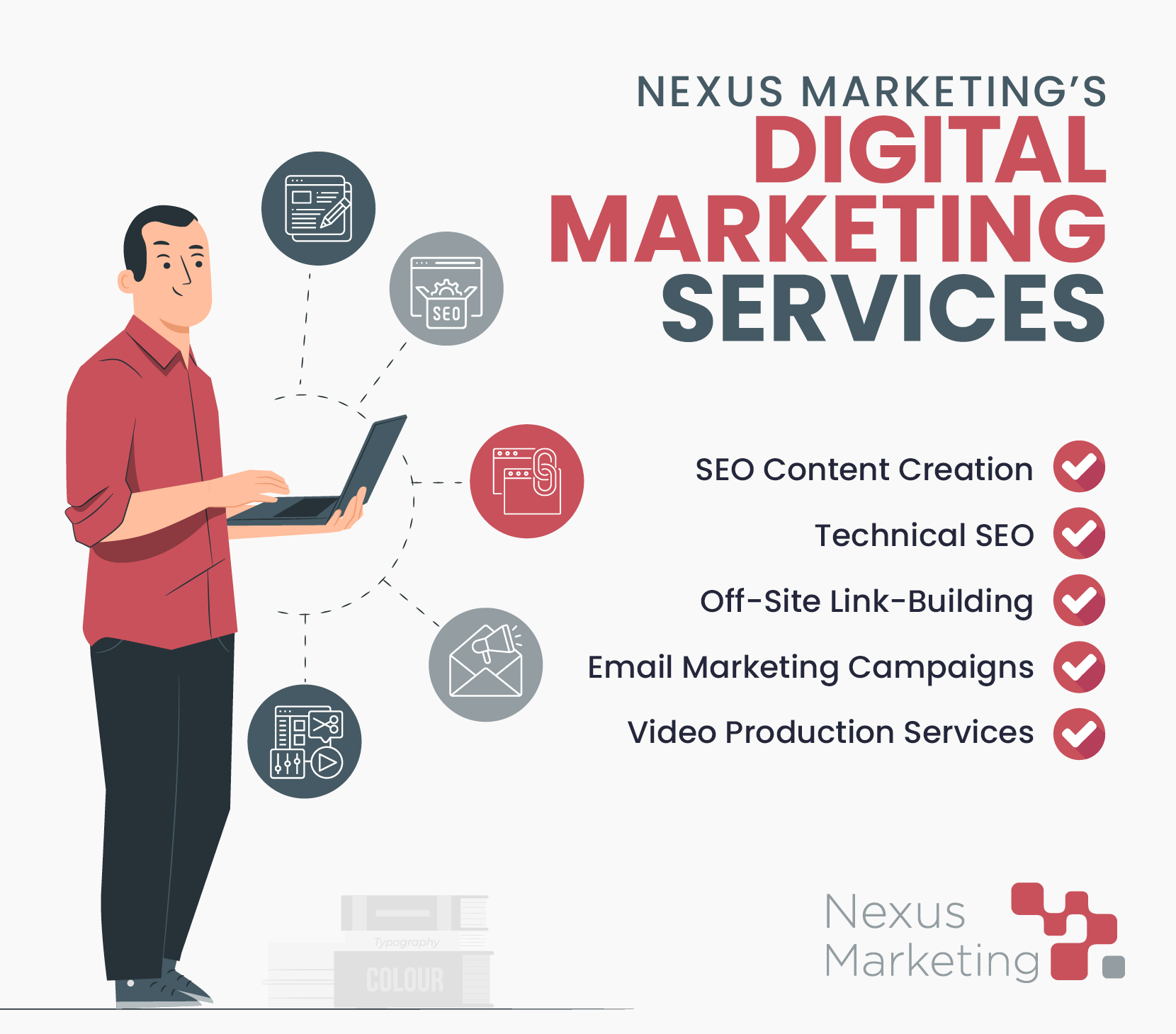
In fact, they helped the Christian publishers at David C Cook rank for 187 of their most important keywords on page one of Google, compared to just five at the start of the partnership. And those numbers account for only the keywords they’re tracking! Now, the organization can rely on its SEO strategy to drive sales for its curriculum.
Please note that Nexus is best suited for nonprofits selling products, programming, or services. While they excel at increasing online engagement, they’re not well-suited for local SEO or exclusively attracting donors.
7. Work With A Marketing Consultant.
Creating professional content and managing a comprehensive content marketing strategy can be a full-time endeavor. Hiring a marketing consultant or agency can offer several advantages:
- Expertise and Efficiency: External experts can provide specialized knowledge, helping to maximize the impact of your marketing. For example, our Google Ad Grant experts can help you acquire the Grant, create compelling ads, target the right keywords, and drive qualified traffic to your website.
- Professional Content Creation: A consultant can handle the intricacies of creating high-quality content that resonates with your audience and adheres to the latest trends and best practices in nonprofit marketing.
Leveraging professional assistance ensures that your nonprofit’s marketing efforts are both strategic and effective, allowing you to focus more on your mission and less on the complexities of content marketing.
Additional Marketing Resources
Nonprofit content marketing is an essential tool for engaging supporters and expanding your reach. From creating powerful Google Ads to developing SEO blog content, your opportunities are endless!
Continue your journey in mastering nonprofit content marketing with these resources:
- Powerful Nonprofit Advertising Examples To Inspire Your Ads: Looking for inspiration for your advertisements? Explore these examples from real nonprofits.
- 40+ Marketing Ideas for Nonprofits to Spread Your Mission: Discover incredible ways to promote your mission and drive support for your work.
- Consistency and Impact: Creating a Nonprofit Style Guide: Follow the advice in this guide to create a style guide that ensures your content is consistent.




